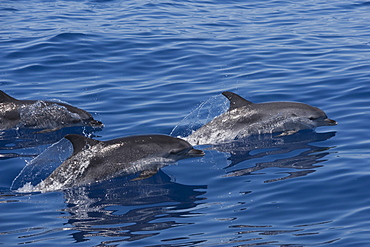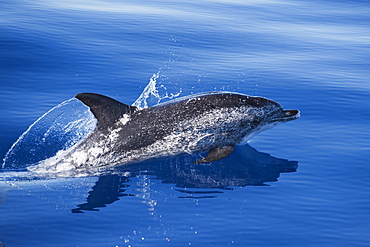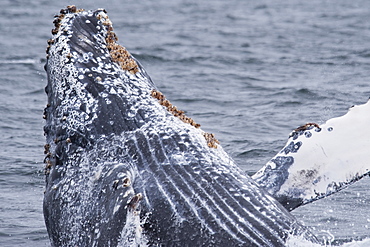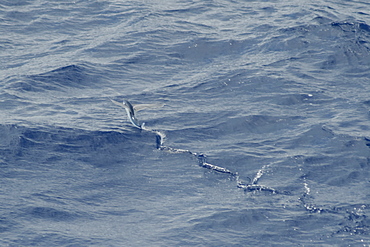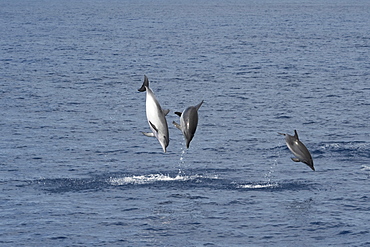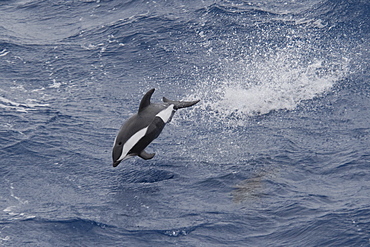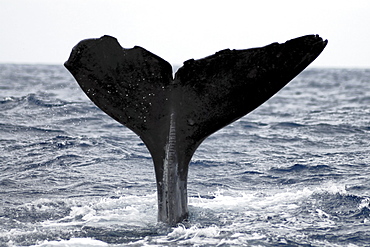Recent searches
Loading...
917-377 - Atlantic Spotted Dolphin (Stenella frontalis) three adults porpoising. Azores, Atlantic Ocean.
917-30 - False Killer Whale (Pseudorca Crassidens). Azores, North Atlantic
917-36 - Striped Dolphin (Stenella Coeruleoalba). Azores, North Atlantic
917-389 - Atlantic Spotted Dolphin (Stenella frontalis) juvenile animal surfacing. Azores, Atlantic Ocean.
917-181 - Central American Spinner Dolphin, Stenella longirostris centroamericana, spinning high in the air, Costa Rica, Pacific Ocean.
917-159 - Central American Spinner Dolphin, Stenella longirostris centroamericana, spinning with small Remora attached, Costa Rica, Pacific Ocean.
917-34 - Pantropical Spotted Dolphin (Stenella Attenuata). Azores, North Atlantic
917-165 - A pair of Short-beaked Common Dolphin, Delphinus delphis, porpoising, Costa Rica, Pacific Ocean.
917-233 - Bull Southern Elephant Seal, Mirounga leonina, South Georgia, South Atlantic Ocean.
917-395 - Atlantic Spotted Dolphin (Stenella frontalis) mature adult surfacing with reflection visible. Azores, Atlantic Ocean.
917-278 - King Penguin Colony (Aptenodytes patagonicus) with South Georgia mountains in the background. Salisbury Plain, South Georgia.
917-408 - Humpback Whale (Megaptera novaeangliae) breaching. Monterey, California, Pacific Ocean.
917-150 - Common Bottlenose Dolphin (Tursiops truncatus). Azores, North Atlantic. Taken 2008
917-194 - Central American Spinner Dolphin, Stenella longirostris centroamericana, calf porpoising, Costa Rica, Pacific Ocean.
917-286 - Hawaiian/Grays Spinner Dolphin (Stenella longirostris) adult animal porpoising. Maldives, Indian Ocean.
917-179 - Central American Spinner Dolphin, Stenella longirostris centroamericana, spinning, Costa Rica, Pacific Ocean.
917-218 - Rough-toothed Dolphin, Steno bredanensis, surfacing with a Dorado, Coryphaena hippurus, in itÃs mouth, Costa Rica, Pacific Ocean. This species of Dolphin is known to prey on large fish such as Dorado.
917-222 - Short-beaked Common Dolphin, Delphinus delphis, porpoising, Costa Rica, Pacific Ocean.
917-198 - Adult Central American Spinner Dolphin, Stenella longirostris centroamericana, porpoising, Costa Rica, Pacific Ocean.
917-18 - Risso's Dolphin (Grampus Griseus). Azores, North Atlantic
917-16 - Risso's Dolphin (Grampus Griseus). Azores, North Atlantic
917-162 - Common Bottlenose Dolphins, Tursiops truncatus, surfacing together, Costa Rica, Pacific Ocean.
917-191 - Common Bottlenose Dolphin, Tursiops truncatus, tail-walking. I counted at least 9 small Remora's on this animal, Costa Rica, Pacific Ocean.
917-188 - Common Bottlenose Dolphin, Tursiops truncatus, spyhopping with a very small Remora under it's beak, Costa Rica, Pacific Ocean.
917-140 - Common Bottlenose Dolphin (Tursiops truncatus). Azores, North Atlantic. Taken 2008
917-39 - Striped Dolphin (Stenella Coeruleoalba). Azores, North Atlantic
917-375 - Atlantic Spotted Dolphin (Stenella frontalis) adult Female and Calf porpoising. Azores, Atlantic Ocean.
917-226 - Short-beaked Common Dolphins, Delphinus delphis, porpoising, Costa Rica, Pacific Ocean.
917-390 - Common Bottlenose Dolphin (Tursiops truncatus) adult animal porpoising. Azores, Atlantic Ocean.
917-257 - Flying Fish Species, note the trail on the surface of the water made by its tail, South Atlantic Ocean.
917-6 - Common Dolphin (Delphinus Delphis). Azores, North Atlantic
917-364 - King Penguin (Aptenodytes patagonicus) colony with South Georgia mountains in the background. Salisbury Plain, South Georgia, South Atlantic Ocean.
917-353 - Humpback Whale (Megaptera novaeangliae) adult animal breaching. Monterey, California, Pacific Ocean.
917-196 - Juvenile Central American Spinner Dolphin, Stenella longirostris centroamericana, breaching, Costa Rica, Pacific Ocean.
917-411 - Rissos Dolphin (Grampus griseus) adult animals surfacing. Monterey, California, Pacific Ocean.
917-117 - Striped Dolphin (Stenalla coeruleoalba). Azores, North Atlantic. Taken 2008
917-201 - Juvenile Central American Spinner Dolphin, Stenella longirostris centroamericana, breaching, Costa Rica, Pacific Ocean.
917-209 - Central American Spinner Dolphin, Stenella longirostris centroamericana, porpoising, Costa Rica, Pacific Ocean.
917-381 - Atlantic Spotted Dolphin (Stenella frontalis) three animals breach simultaneously. Azores, Atlantic Ocean.
917-43 - Atlantic Spotted Dolphin (Stenella Frontalis). Azores, North Atlantic
917-272 - Hourglass Dolphin, Lagenorhynchus cruciger, Male Dolphin breaching at great speed, Drake Passage, Southern Ocean. Males of this species can be identified by the huge hooked dorsal fin and post-anal keel.
917-171 - Central American Spinner Dolphins, Stenella longirostris centroamericana, this is part of a super-pod of over 2,000 individuals, Costa Rica, Pacific Ocean.
917-265 - Pantropical Spotted Dolphin, Stenella attenuata, breaching with small Remora attached, Island of Saint Helena, South Atlantic Ocean.
917-414 - Humpback Whale (Megaptera novaeangliae) lunge-feeding on Krill. Monterey, California, Pacific Ocean. MORE INFO: Baleen Plates are visible on the top jaw & Krill can be seen escaping from the animals mouth.
917-167 - A pair of Short-beaked Common Dolphin, Delphinus delphis, porpoising, Costa Rica, Pacific Ocean.
917-116 - Sperm Whale (Physeter macrocephalus). Azores, North Atlantic. Taken 2008
917-153 - Common Bottlenose Dolphin, Tursiops truncatus, breaching high in the air, Costa Rica, Pacific Ocean.
917-144 - Common Bottlenose Dolphin (Tursiops truncatus). Azores, North Atlantic. Taken 2008
917-44 - Atlantic Spotted Dolphin (Stenella Frontalis). Azores, North Atlantic
917-387 - Atlantic Spotted Dolphin (Stenella frontalis) two animals surfacing. Azores, Atlantic Ocean.
917-80 - Common Dolphin (Delphinus delphis). Azores, North Atlantic. Taken 2008
917-129 - Common Bottlenose Dolphin (Tursiops truncatus). Azores, North Atlantic. Taken 2008
917-246 - Antarctic Fur Seal pup, Arctocephalus gazella, yawning, South Georgia, South Atlantic Ocean.
917-391 - Atlantic Spotted Dolphin group (Stenella frontalis) four animals surfacing. Azores, Atlantic Ocean.
917-204 - Central American Spinner Dolphin, Stenella longirostris centroamericana, porpoising at speed, Costa Rica, Pacific Ocean.
917-420 - Humpback Whale (Megaptera novaeangliae) lunge-feeding on Krill. Monterey, California, Pacific Ocean. MORE INFO: Baleen Plates are visible on the top jaw & Krill can be seen escaping from the animals mouth.
917-379 - Atlantic Spotted Dolphin (Stenella frontalis) three animals breach simultaneously. Azores, Atlantic Ocean.
917-27 - False Killer Whale (Pseudorca Crassidens). Azores, North Atlantic
917-382 - Atlantic Spotted Dolphin (Stenella frontalis) two animals breach simultaneously with the Island of Faial in the background. Azores, Atlantic Ocean.
917-154 - Central American Spinner Dolphin, Stenella longirostris centroamericana, spinning, Costa Rica, Pacific Ocean.
917-20 - Risso's Dolphin (Grampus Griseus). Azores, North Atlantic
917-410 - Rissos Dolphin (Grampus griseus) adult animals surfacing. Monterey, California, Pacific Ocean.
917-149 - Common Bottlenose Dolphin (Tursiops truncatus). Azores, North Atlantic. Taken 2008
917-415 - Humpback Whale (Megaptera novaeangliae) adult animal lob-tailing. Monterey, California, Pacific Ocean.
917-373 - Atlantic Spotted Dolphin (Stenella frontalis) two adults porpoising. Azores, Atlantic Ocean.
917-400 - Atlantic Spotted Dolphin group (Stenella frontalis) surfacing. Azores, Atlantic Ocean.
917-184 - Common Bottlenose Dolphin, Tursiops truncatus, breaching, Costa Rica, Pacific Ocean.
917-352 - Humpback Whale (Megaptera novaeangliae) calf breaching. Monterey, California, Pacific Ocean.
917-378 - Atlantic Spotted Dolphin (Stenella frontalis) three animals breach simultaneously. Azores, Atlantic Ocean.
917-206 - A group of Central American Spinner Dolphins, Stenella longirostris centroamericana, porpoising, Costa Rica, Pacific Ocean.
917-291 - Central American Spinner Dolphin group (Stenella longirostris centroamericana) part of a super pod of over 2,000 individuals, image taken from above the waters surface. Costa Rica, Pacific Ocean.
917-409 - Rissos Dolphin (Grampus griseus) adult animals surfacing. Monterey, California, Pacific Ocean.
917-95 - Common Dolphin (Delphinus delphis). Azores, North Atlantic. Taken 2008
917-147 - Common Bottlenose Dolphin (Tursiops truncatus). Azores, North Atlantic. Taken 2008
917-419 - Humpback Whale (Megaptera novaeangliae) lunge-feeding on Krill. Monterey, California, Pacific Ocean. MORE INFO: Baleen Plates are visible on the top jaw & Krill can be seen escaping from the animals mouth.
917-192 - Common Bottlenose Dolphin, Tursiops truncatus, tail-walking. I counted at least 9 small Remora's on this animal, Costa Rica, Pacific Ocean.
917-210 - Central American Spinner Dolphin, Stenella longirostris centroamericana, porpoising, Costa Rica, Pacific Ocean.
917-35 - Pantropical Spotted Dolphin (Stenella Attenuata). Azores, North Atlantic
917-59 - Indo-Pacific Bottlenose Dolphin (Tursiops Aduncus). Azores, North Atlantic
917-85 - Common Dolphin (Delphinus delphis). Azores, North Atlantic. Taken 2008
917-180 - Male (near) & female (far) Central American Spinner Dolphins, Stenella longirostris centroamericana, surfacing, Costa Rica, Pacific Ocean.
917-151 - Common Bottlenose Dolphin, Tursiops truncatus, breaching high in the air, Costa Rica, Pacific Ocean.
917-363 - Antarctic Fur Seal (Arctocephalus gazella) adult Female amongst Tussac Grass. South Georgia, South Atlantic Ocean.
917-216 - Rough-toothed Dolphin, Steno bredanensis, breaching, Costa Rica, Pacific Ocean.
917-176 - Central American Spinner Dolphin, Stenella longirostris centroamericana, spinning, Costa Rica, Pacific Ocean.
917-131 - Common Bottlenose Dolphin (Tursiops truncatus). Azores, North Atlantic. Taken 2008
917-406 - Flying Squid Species in mid-air (Ommastrephes bartramii). Extremely rare unusual image. South Atlantic Ocean. MORE INFO: Flying Squid use membranes between their tentacles (visible on pic) & two fins at the rear of the mantle to glide through the air in a similar way to flying fish. These unique adaptations allow them to avoid predation more easily. Ommastrephid squids are among the strongest swimmers in the Cephalopoda. A number of species are fished commercially. This particular species (Ommastrephes bartramii), is commonly known as "Neon Flying Squid" due to its colouration and its ability to glide over the ocean surface as seen in the photographs. Please note that this is a genuine image of a wild animal in its natural environment. It is not a digital manipulation.
917-230 - Flying Squid Species in mid-air, roughly 100 nm North of Tristan Da Cunha, South Atlantic Ocean. Flying Squid use membranes between their tentacles (visible on pic) & two fins at the rear of the mantle to glide through the air in a similar way to flying fish.
917-193 - Common Bottlenose Dolphin, Tursiops truncatus, breaching with two large Remora's attached, Costa Rica, Pacific Ocean.
917-254 - King Penguin chick, Aptenodytes patagonicus, amongst colony, Salisbury Plain, South Georgia, South Atlantic Ocean.
917-105 - Risso's Dolphin (Grampus griseus). Azores, North Atlantic. Taken 2008
917-139 - Common Bottlenose Dolphin (Tursiops truncatus). Azores, North Atlantic. Taken 2008
917-277 - King Penguin (Aptenodytes patagonicus) amongst colony with South Georgia mountains in the background. Salisbury Plain, South Georgia.
917-74 - Sei Whale (Balaenoptera borealis). Azores, North Atlantic. Taken 2008
917-228 - Flying Squid Species in mid-air, roughly 100 nm North of Tristan Da Cunha, South Atlantic Ocean. Flying Squid use membranes between their tentacles (visible on pic) & two fins at the rear of the mantle to glide through the air in a similar way to flying fish.
917-392 - Atlantic Spotted Dolphin group (Stenella frontalis) mature adult surfacing with reflection visible. Azores, Atlantic Ocean.
917-256 - Southern Giant Petrels, Macronectes giganteus, flying in unison, Gough Island, South Atlantic Ocean.
917-135 - Common Bottlenose Dolphin (Tursiops truncatus). Azores, North Atlantic. Taken 2008
917-243 - Southern Elephant Seal Bulls, Mirounga leonina, South Georgia, South Atlantic Ocean.
